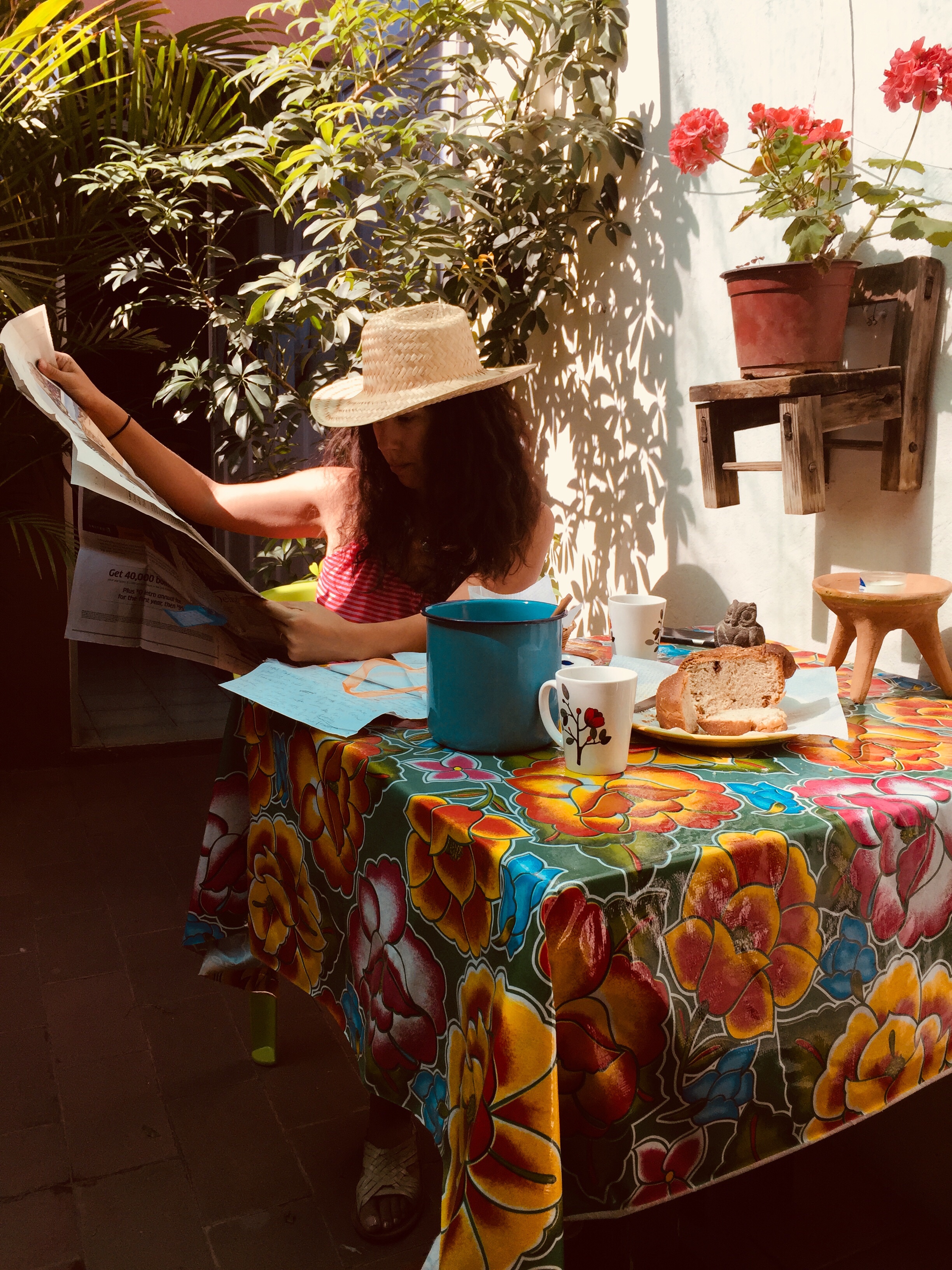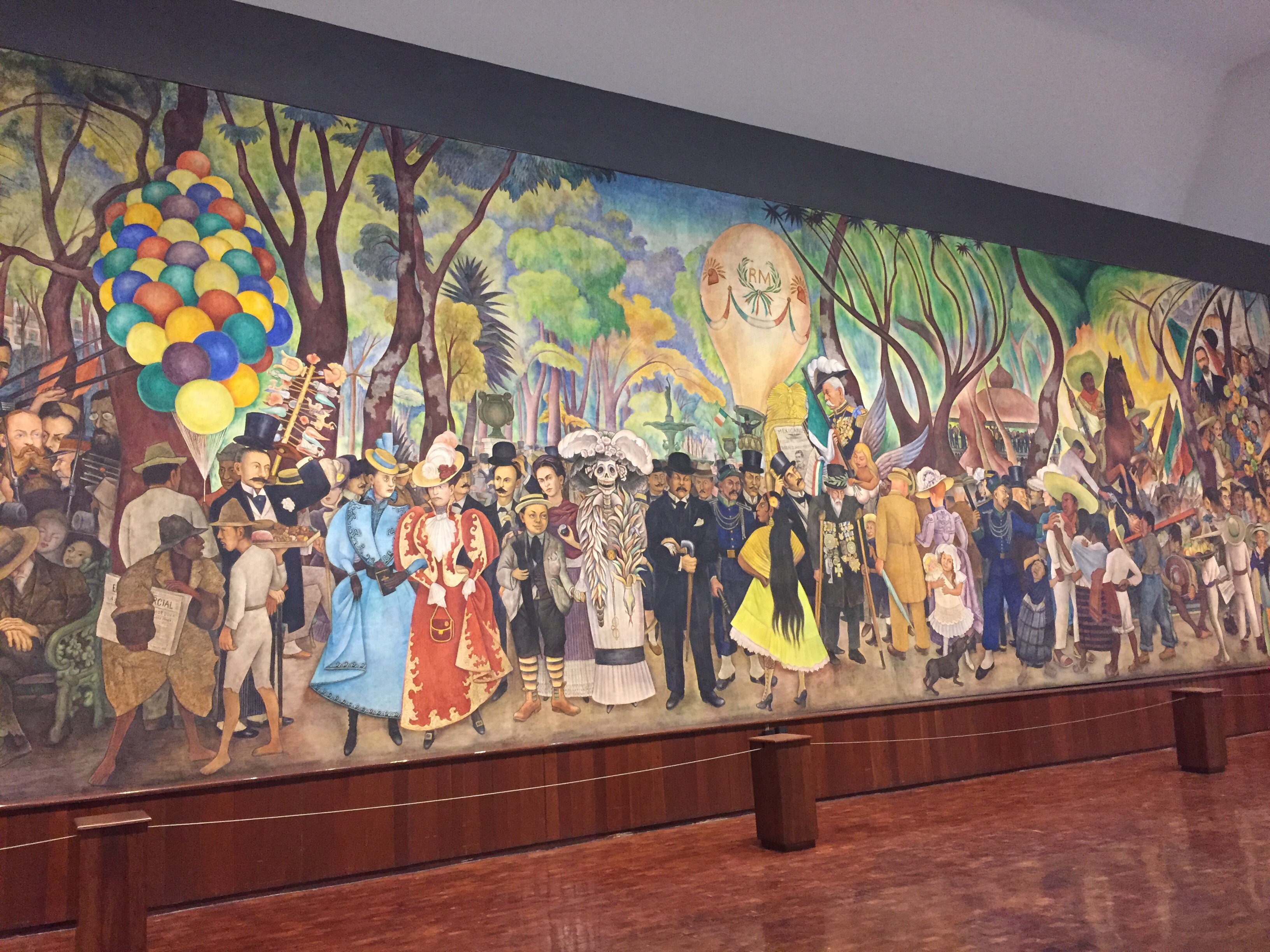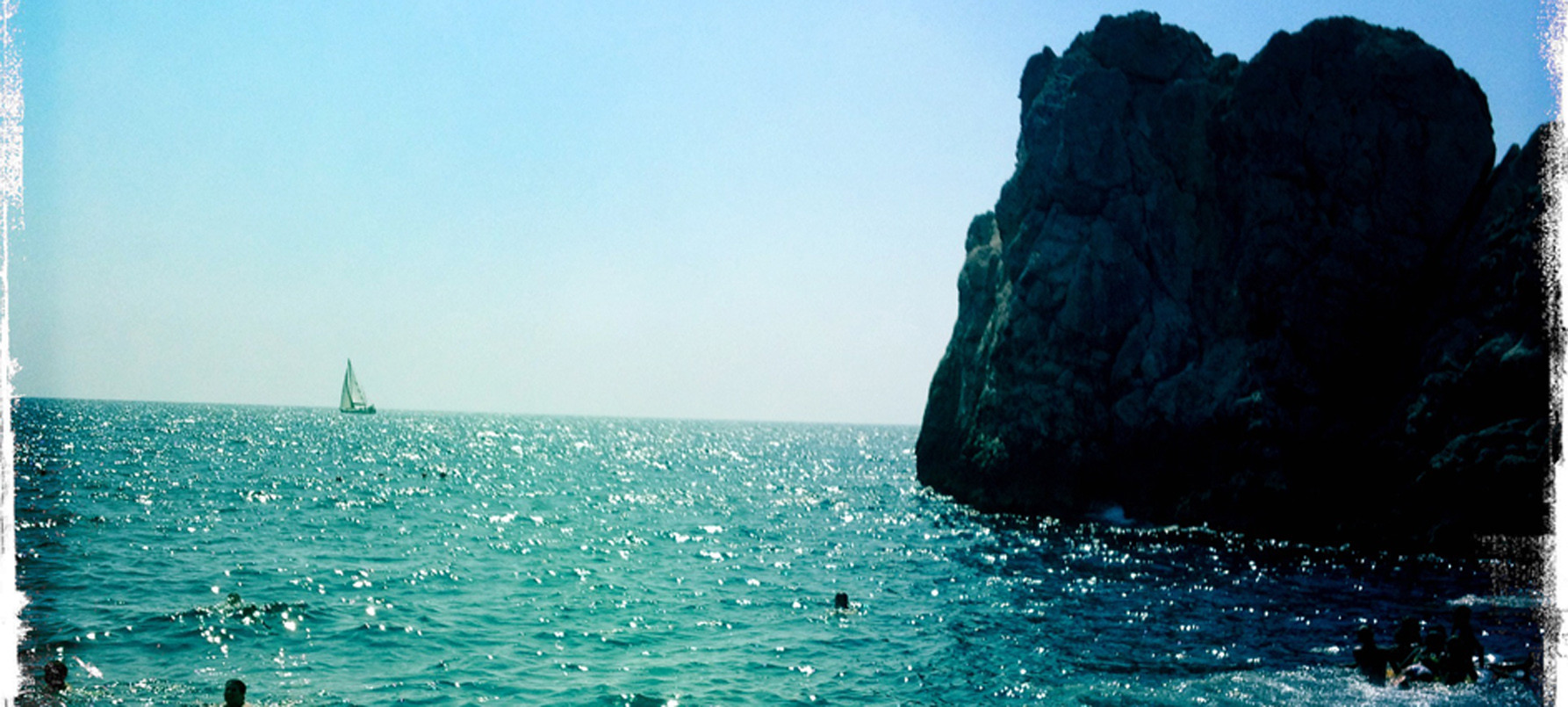 Good Morning! I just woke up. It’s about 7:15 here in Oaxaca and it’s nice and cool out. By 9:30AM it begins to get hot, and by 11 it’s about 85 degrees with a giant sunny sky. It looks a little like the San Gabriel valley here, with hills surrounding the historic center made up of cobblestone streets and colonial cathedrals, plazas and shops.
Good Morning! I just woke up. It’s about 7:15 here in Oaxaca and it’s nice and cool out. By 9:30AM it begins to get hot, and by 11 it’s about 85 degrees with a giant sunny sky. It looks a little like the San Gabriel valley here, with hills surrounding the historic center made up of cobblestone streets and colonial cathedrals, plazas and shops.
The last 4 days have been packed to the brim with sights, sounds, sabores and experiences, so I haven’t had much time to pull my phone out for long enough to write a blog post. Sammy lovingly put the Ciudad de Mexico itinerary up. So I’ll start from there. First — I didn’t know that Ciudad de Mexico changed its name and rebranded itself in the last couple years! I’m sure there are tons of politics involved, and I am ignorant to all of it. So that’s in my list of things to do: read about the last 5 years (heck, or 50) of the political space of Mexico City. When I came with Tio and Brittney 15 years ago, it was Distrito Federal (DF). And in 2016, that all changed so now there’s “México City pink” everywhere you turn, and it’s known as “CDMX.” It’s very millennial.
What struck me the most about #CDMX was how much it has changed in the last decade and a half, and how much it has stayed the same. The historical centers are of course preserved and unchanging: for example, Palacio de Bellas Artes and the Alameda Central park (the oldest park in all of Latin America) are well kept and beloved by all. We saw dozens of older men playing chess in the park, alongside teenagers beatboxing, and couples entwined in new love’s embrace. I learned that the park is also where the Catholic inquisition occurred and god knows how many people were tortured. We also happened upon Diego Rivera’s masterpiece in this area on accident (in the Museo de Murales), which was incredible and included a lot of his drawings from his time in Russia / the Soviet Union and explores how those experiences influenced him. I had only ever seen his epic mural as a tiny page in front of me – in my high school Spanish book. In person, it was magnificent.

In any case, the historic elements of Mexico City remain more or less unchanged. Simultaneously, the city is sinking, literally. Steps are added where needed, and the historic buildings are cared for in ways others are not. CDMX sits atop an ancient water source / lake and indigenous land that is now drained. Now, it is sinking because of the porous lake soil. I was reminded of the fight for the rights of water in the US. The indigenous ways of protecting the land that colonizers typically ignore. When we don’t honor the RIGHTS inherent to the land, we build cities and pipelines on top of them, kill animal inhabitants and ecosystems and people, and 500 years later, the city sinks; so there. I hope the inhabitants of CDMX are cared for as these environmental changes occur inevitably over time.
We got fancy in CDMX. Which makes sense — there are wealthy / rich people here alongside extreme poverty and middle class folk. We saw a part of the city — Polanco — that was filled with all blonde / very white Mexicans and that was new to me! The neighborhood where we “fine dined” (for the first time EVER in our lives) at Pujol was in this neighborhood. It was almost exactly like Beverly Hills. We learned later that if we had gone a street over in the same barrio we also would have seen poverty.
We also spent time in the lovely, more working class neighborhood of Santa María La Ribera (where our hotel was) and ate food that was far more delicious than Pujol for a couple US dollars. The best food I’ve had in Mexico so far were panuchos we ate outside of a woman’s house in the Yucatán. The flavors I still remember and they were also not more than $5 for us to both eat full meals.
Which brings me to something I’ve thought about ever since we watched “Chef’s Table” on Netflix (where we first saw Pujol) and documented many Michelin rated “top chefs” doing their best to reimagine the old foods indigenous to their countries. The food deserves to be elevated, much like mesoamerican art deserves to be in galleries. Pero, this series often depicts men who go and learn how to make ancient foods from un-named indigenous women in far away pueblos. In their attempt to pedastalize this food, they attempt to recreate it, but it lacks the mouthwatering flavors that are only learned from a lifetime of ancestral practices. It always bugged me seeing these men more or less get rich off of the work and wisdom / knowledge of these women who cook for families and communities without want for fame or profit. In fact, these women will forever remain nameless. And probably happier, to be honest, for it seems that when one is truly connected to their ancestral ways of making art, textiles and food it isn’t about their ego. It’s about caring for the collective. As we visited indigenous artists, I noticed they didn’t ever proclaim “I made this piece of art or food,” or “this is mine.” I wondered if there is even a sense of the “I” in many indigenous communities. So when the chefs get famous for a mediocre, sometimes FLAVORLESS simulacrum of what is mostly women’s work, it pisses me off and makes me feel the ugliness of the world.
Then in Oaxaca, of course we go to something so ancient like Teotitlán del Valle. We see grandmothers the color of earth, as tall as my shoulder, with long braided dark grey hair, and faces so deep and beautiful they make you exhale just to see them. They click open their Zapotec language, and carry generations of artisanal craftwork in their bodies and spirits. They pass this knowledge on to their family. There seems to be less focus on the individual, and more focus on the wellbeing of the community. When we saw the tapete (rug) presentation, I had no idea that we were going to see it. To have Juan Carlos share his family’s practices w us was miraculous.
To show us the uncombed wool, and let us comb it. To let us roll the cochinilla on the metate. To place the color of an insect that grows on cactus (cochinilla) in the palms of our hands, and show us how lime changes the pure color, and other natural elements too. The artist in me came alive and I wondered if there is anything so true and beautiful and ancestral in all my life.
He talked about the weaving being a dance w the whole body, the eyes, the heart, and also the image in the head that happens first. This is after they’ve collected water from the mountain rain, hand weave every thread, dye to brilliant colors naturally, and then masterfully create the images and pictures. After taking us through the Zapotec cosmovisions within each image, they offer them to us to purchase without any pressure, for a mere $80 or $220, depending. Many of them take 5-6 MONTHS to create. How can we spend $170 on a meal that lasts a few hours. What are our priorities? To honor the indigenous practices that are good to the earth and purchase something that will last for generations? Or to stuff our faces with a simulacrum of indigenous food and get a belly ache?
On our last night in Oaxaca, we ate at a woman’s home converted into an adorable restaurant with a courtyard garden. We tasted foods from where she is from in Oaxaca near the coast, Iste. It was homecooking and “ugly delicious” in the way a home-cooked meal always is: warming the heart, un-pretentious, real. Every bite burst open with surprising and evolving flavors. We were happy, without all the bells and whistles of the “fine dining” experience.
Still, I feel grateful for all that we’ve seen and felt. Pujol, in its own way, was also special: a painting curated just for us by folks who LOVE what they do and create a kind of theatre of a meal. I can appreciate the care and artistry of that as well, and again, I feel lucky for the privileges of being given all of these opportunities.
